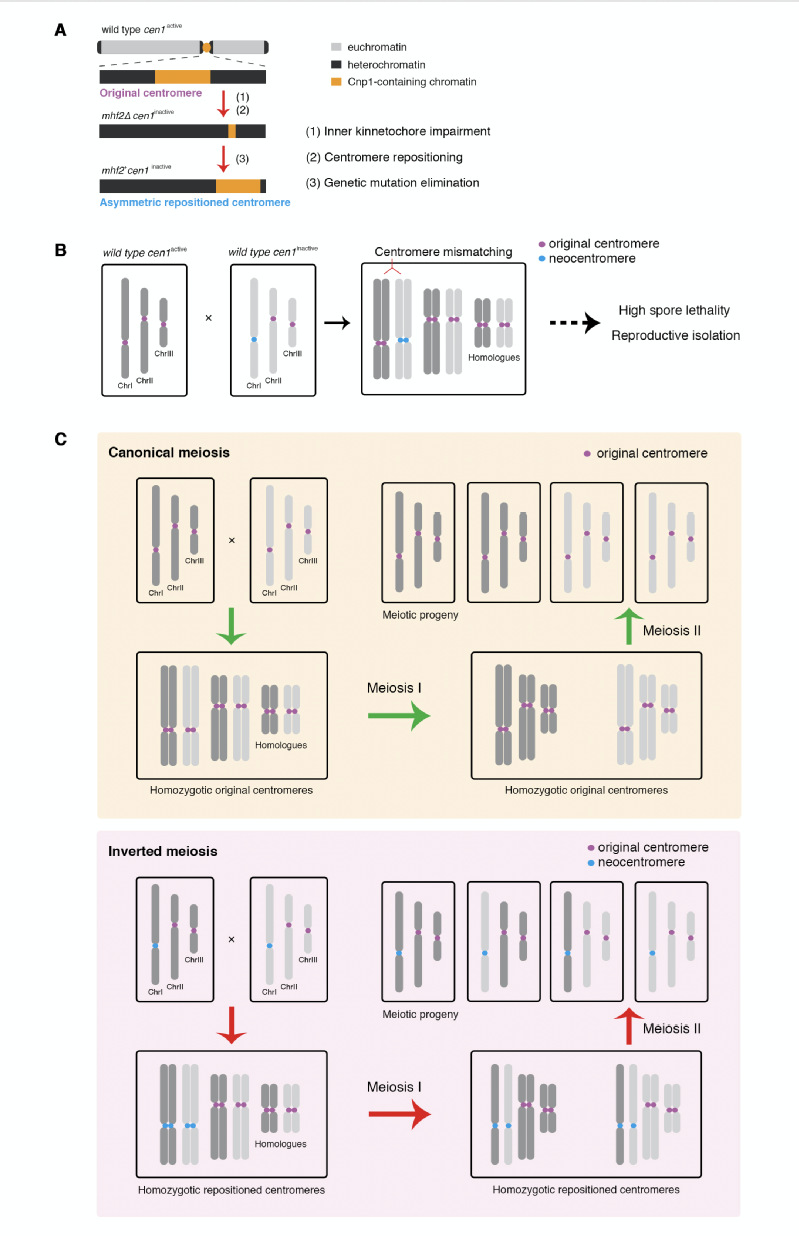On October 10th, 2019, Prof. Xiang-Wei He’s group published a paper titled “Centromere repositioning causes inversion of meiosis and generates a reproductive barrier”in PNAS.
The chromosomal position of each centromere is determined epigenetically and is highly stable, whereas incremental cases have supported the occurrence of centromere repositioning on an evolutionary time scale (evolutionary new centromeres, ENCs), which is thought to be important in speciation. The mechanisms underlying the high stability of centromeres and its functional significance largely remain an enigma. Here, in the fission yeast Schizosaccharomyces pombe, we identify a feedback mechanism – the kinetochore, whose assembly is guided by the centromere, in turn, enforces centromere stability. Upon going through meiosis, specific inner kinetochore mutations induce centromere repositioning – inactivation of the original centromere and formation of a new centromere elsewhere – in one of the three chromosomes at random. Repositioned centromeres reside asymmetrically in the pericentromeric regions and cells carrying them are competent in mitosis and homozygotic meiosis. However, when cells carrying a repositioned centromere are crossed with those carrying the original centromere, the progeny suffer severe lethality due to defects in meiotic chromosome segregation. Thus, repositioned centromeres constitute a reproductive barrier that could initiate genetic divergence between two populations with mismatched centromeres, documenting a functional role of ENCs in speciation. Surprisingly, homozygotic repositioned centromeres tend to undergo meiosis in an inverted order, i.e., sister chromatids segregate first, and homologous chromosomes separate second, whereas the original centromeres on other chromosomes in the same cell undergo meiosis in the canonical order, revealing hidden flexibility in the perceived rigid process of meiosis.




